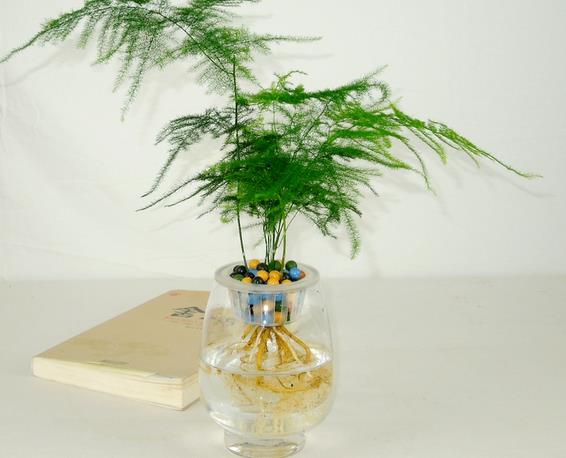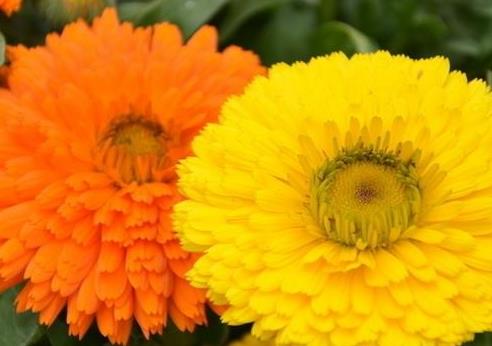What is the breeding method of chrysanthemum? How to deal with chrysanthemum potted plants attacked by red spiders? ...
Chrysanthemum is one of the top ten flowers in China, one of the four gentlemen in flowers (plum orchid, bamboo and chrysanthemum), and various varieties of chrysanthemum are named in different types. Chrysanthemum is a valuable ornamental flower cultivated by long-term artificial selection. Let's talk about the relevant knowledge of cultivating chrysanthemum below!
What is the method of chrysanthemum reproduction?
There are two methods of vegetative propagation and seed propagation. Vegetative propagation includes stem cutting, rationing, grafting, layering and tissue culture. Cuttage propagation is usually given priority to, which also sub-bud, shoot, leaf bud.
1. bud
In autumn and winter, the external buds of plants are cut. The criterion of bud selection is far from plant and bud head plump. After the buds are selected, the lower leaves are stripped, and the buds are inserted into the flowerpots or the coarse sand of the cutting bed in the greenhouse or the greenhouse according to the plant spacing of 3-4 cm and the row spacing of 4-5 cm, and the room temperature is kept at 7-8 DEG C. After the spring is warm, the buds are planted outdoors. Young shoots: This method is most widely used. More than April-May cuttings. Cut tender technology 8-10 cm as cuttings, good management after cutting. At 18-210C, most varieties took root in about 3 weeks, and seedlings could be transferred to pots in about 4 weeks.
2. inserted
Medium available garden soil with 1/3 of the chaff ash. Shading on high beds. Full light cuttings, if equipped with automatic spraying equipment, do not require shade. Leaf bud insertion: cut a leaf with axillary bud from the branch and insert it. This method is used only for breeding rare varieties. Rite: generally in the Qingming before and after, the plant dug out, according to the natural form of the root with roots separated, another plant pot.
3. grafting
For strong growth of chrysanthemum, it can be used to make "Shiyangjin" or DaLi chrysanthemum, Artemisia annuaak or Artemisia apiacea can be used as rootstock for grafting. Artemisia seeds are collected at the end of autumn, sown in greenhouse in winter, or raised in hotbed in March, moved to pots or fields when seedlings are 3-4 cm high in late April, and split in sunny days. Layering: This method is used only in the bud mutation part of propagation.
4. seed
Chrysanthemum seeds germinate slowly at temperatures above 100 degrees Celsius, with an appropriate temperature of 250C. 2-4 Sowing sparsely during the month, under normal circumstances, more flowers can be produced in the same year.
5. Tissue culture
The tissue culture technique has the advantages of less useful materials, large seedling quantity, virus-free, disease-free and good variety characteristics. MS+6BA=(6-benzylpurine) 1 mg/l + NAA 0.2 mg/l, pH 5.8. Inoculate chrysanthemum with stem tips (0.3- 0.5 mm), tender stems or buds (9-10mm in diameter), cut into 0.5 cm segments. Room temperature 26 ° C +1 ° C, 8 hours of light per day (1000-1500 lux). Callus can be induced after 1-2 months. After 1-2 months, green shoots are differentiated. The differentiated green buds were transferred to White+NAAI-2 mg/l medium, and strong roots could be induced after about one month. After a month of cultivation, it can be planted outdoors. According to the original culture medium half of irrigation, this is the key to the success of tube seedlings.

What is the method of chrysanthemum reproduction? How does chrysanthemum potted plant suffer red spider encroach to handle?
How does chrysanthemum potted plant suffer red spider encroach to handle?
Red spiders are the main pests of chrysanthemum. Generally, dry and hot wind weather is easy to occur in May to June. Red spiders often overwinter in the branches and skin cracks of killed flowers and trees, dead leaves, roots of weeds and soil cracks. Rice grows first on weeds, etc., and in May, it is transferred to chrysanthemum by crawling, wind blowing, rain splashing, water washing, etc.
Red spiders cluster in chrysanthemum leaves more than the back, spinning silk network. The injured leaves initially appeared gray-yellow spots on the leaves, gradually enlarged and contiguous. When the injury was serious, the leaves were as yellow as being baked by fire, seriously affecting the growth and development of chrysanthemum.
To remove weeds and fallen leaves, the ground can be splashed with water to freeze or suppress in winter to remove pests such as overwintering red spiders.
Dry weather season, pay attention to multiple water spray, such as temporary windbreaks better, to create a humid microclimate, prevent red spiders occur.
The flowers and other things that have occurred in the vicinity of red spiders should be prevented and controlled as soon as possible to prevent red spiders from spreading to chrysanthemums.
Red spider occurs when quantity is few, usable brush dips medicine besmear. Use 40% omethoate emulsifiable concentrate 2000 times solution, or 40% omethoate emulsifiable concentrate or 40% dicofol emulsifiable concentrate 1500~2000 times solution. Red spider occurs when much, usable above liquid medicine sprays much. It is usually sprayed every 7 to 10 days to kill newly hatched larvae. When spraying, we must pay attention to the back of the spray leaves, especially dicofol has no systemic effect, only spray on the red spider body and eggs to play a contact effect.
How does chrysanthemum potted plant suffer red spider encroach to handle? Red spiders are the main pests of chrysanthemum. Generally, dry and hot wind weather is easy to occur in May to June. Red spiders often overwinter in the branches and skin cracks of killed flowers and trees, dead leaves, roots of weeds and soil cracks. Rice grows first on weeds, etc., and in May, it is transferred to chrysanthemum by crawling, wind blowing, rain splashing, water washing, etc.
Red spiders cluster in chrysanthemum leaves more than the back, spinning silk network. The injured leaves initially appeared gray-yellow spots on the leaves, gradually enlarged and contiguous. When the injury was serious, the leaves were as yellow as being baked by fire, seriously affecting the growth and development of chrysanthemum.
To remove weeds and fallen leaves, the ground can be splashed with water to freeze or suppress in winter to remove pests such as overwintering red spiders.
Dry weather season, pay attention to multiple water spray, such as temporary windbreaks better, to create a humid microclimate, prevent red spiders occur.
The flowers and other things that have occurred in the vicinity of red spiders should be prevented and controlled as soon as possible to prevent red spiders from spreading to chrysanthemums.
Red spider occurs when quantity is few, usable brush dips medicine besmear. Use 40% omethoate emulsifiable concentrate 2000 times solution, or 40% omethoate emulsifiable concentrate or 40% dicofol emulsifiable concentrate 1500~2000 times solution. Red spider occurs when much, usable above liquid medicine sprays much. It is usually sprayed every 7 to 10 days to kill newly hatched larvae. When spraying, we must pay attention to the back of the spray leaves, especially dicofol has no systemic effect, only spray on the red spider body and eggs to play a contact effect.
How does chrysanthemum suffer the encroachment of red spider to handle? I hope you can read this article after some harvest!
Control skills of red spider in potted chrysanthemum
Autumn is the chrysanthemum blooming season, although it is early winter, but most of the chrysanthemum is still blooming, there is no sign of withering, its beautiful flowers penetrate a noble temperament, sometimes fresh and refined, sometimes beautiful and moving, let people beautiful. However, when it blooms, it is also the time when pests and diseases are most likely to invade, especially with red spiders, they continue to reproduce in summer and autumn, winter will attach to chrysanthemum plants for winter, so seriously affecting the ornamental value of chrysanthemum, how to prevent and control red spiders on potted chrysanthemum? Let's take a look. Red spiders are the main pests of chrysanthemum. Generally, dry and hot wind weather is easy to occur in May to June. Red spiders often overwinter in the branches and skin cracks of killed flowers and trees, dead leaves, roots of weeds and soil cracks. The injured leaves initially appeared gray-yellow spots on the leaves, gradually enlarged and contiguous. When the injury was serious, the leaves were as yellow as being baked by fire, seriously affecting the growth and development of chrysanthemum. Control methods: 1. To remove weeds and fallen leaves, the ground can be splashed with water or suppressed in winter to remove pests such as overwintering red spiders. 2. Dry weather season, pay attention to multiple water spray, such as temporary windbreaks better, to create a humid microclimate, prevent red spiders occur. 3. The flowers and other things that have occurred in the vicinity of red spiders should be prevented and controlled as soon as possible to prevent red spiders from spreading to chrysanthemums. 4. Red spider occurs when quantity is few, usable brush dips medicine besmear. Use 40% omethoate emulsifiable concentrate 2000 times solution, or 40% omethoate emulsifiable concentrate or 40% dicofol emulsifiable concentrate 1500~2000 times solution. Red spider occurs when much, usable above liquid medicine sprays much. It is usually sprayed once every 7 to 10 days to kill newly hatched larvae. When spraying, we must pay attention to the back of the spray leaves, especially dicofol has no systemic effect, only spray on the red spider body and eggs to play a contact effect.
- Prev

What is the breeding method of asparagus? What are the cultivation techniques of asparagus?
Asparagus likes warm, humid and semi-overcast ventilated environment, can't bear cold and drought in winter, can't pour too much water, root will rot, and avoid direct sunlight in summer. It is better to cultivate loose, fertile and well-drained sandy loam rich in humus. It is appropriate to keep the room temperature between 12 and 18 ℃.
- Next

What are the main points of summer and autumn conservation of chrysanthemum potted plants? What is the specific grafting method of chrysanthemum pot planting? ...
Chrysanthemum is one of the traditional precious flowers in China, which originated in Henan and other places in central China, with a history of more than 3000 years. There are many varieties of chrysanthemum, and there are more than 2000 kinds of chrysanthemum at present, and their flower shapes and colors are at the top of the list. Wu Fuhua, a chrysanthemum expert in Chengbei Park, Shuyang County, Jiangsu Province, has done more research on chrysanthemums.
Related
- Fuxing push coffee new agricultural production and marketing class: lack of small-scale processing plants
- Jujube rice field leisure farm deep ploughing Yilan for five years to create a space for organic food and play
- Nongyu Farm-A trial of organic papaya for brave women with advanced technology
- Four points for attention in the prevention and control of diseases and insect pests of edible fungi
- How to add nutrient solution to Edible Fungi
- Is there any good way to control edible fungus mites?
- Open Inoculation Technology of Edible Fungi
- Is there any clever way to use fertilizer for edible fungus in winter?
- What agents are used to kill the pathogens of edible fungi in the mushroom shed?
- Rapid drying of Edible Fungi

